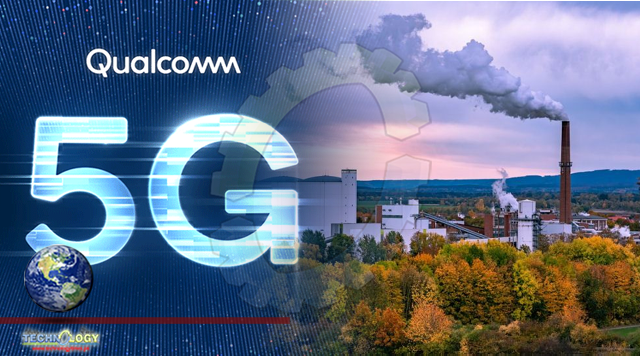Digital technology could be the most powerful and scalable tool the world needs to reduce climate change effects, and 5G is at the forefront of this effort.

By mark jaction
Increasingly, climate change is one of the major concerns facing societies and economies around the world. The Intergovernmental Panel on Climate Change (IPCC) predicts that warming at 1.5 ° C could raise sea levels by 0.4 meters in 2100, exposing up to 69 million people to floods. It is expected to cause enormous confusion and harm.
Current global emission targets are only achieved by accelerating innovative technologies, enabling the industry to transform its organization into a sustainable business. Digital technology could be the most powerful and scalable tool the world needs to tackle climate change, and 5G is at the forefront of this effort.
About the author
Peters Suh, Network & Connected Services North America Practice Lead, Accenture.
Wireless network operators have already taken a number of steps to limit emissions, including reducing energy consumption, switching to more efficient network equipment, and procuring renewable energy. However, more than just improving the current network is needed to offset the increase in data volume on mobile networks.
The impact of 5G is three times more likely to counter the impact of climate change. With significantly improved energy efficiency, 5G reduces greenhouse gases, reduces emissions from other industries, monitors the environment more accurately and enables it to accommodate a wider range of environments. Climate change initiatives.
Rapid and effective deployment of 5G builds more efficient wireless networks
5G promises significant improvements in current wireless technology in terms of latency, throughput, and device connectivity, and is set to increase data demand and number of devices per device as a result.
However, despite increasing demand, 5G allows network operators to increase energy efficiency per unit output level. According to STL partners, 5G offers the potential to reduce energy consumption per bit of transmitted data by 98%. This means a cumulative global savings of over 1 billion tonnes of CO2 between 2020 and 2030. This is more than a year of greenhouse gas emissions from all ocean shipping or all aviation worldwide.
This theory is made possible by innovative equipment manufacturers releasing hardware that combines multiple wireless technologies into a single device, increasing energy efficiency at each site. Technologies such as network functions virtualization (NFV), software-defined networking (SDN), and network slicing give operators greater control over their networks, scaling up or down to meet demand for energy consumption. You will be able to monitor.
5G allows high-emission industries to reduce their emissions
5G latency and bandwidth improvements, combined with new technology features such as mobile edge computing (MEC), also enable new use cases that significantly reduce emissions from most industries. This will change the way we live and work and significantly reduce greenhouse gases.
In 5G-enabled smart cities, data, sensors and connected devices will help improve government services and the quality of life of residents through analytics, artificial intelligence and automation that enable a new generation of platforms and services. ..
5G is unique in that it acts as a platform for other disruptive technologies such as XR, IoT and AI. Introducing these technologies to a variety of industries can accelerate climate change efforts, including significantly reducing energy use and reducing the need for telecommuting.
Other potential use cases include implementing 5G in connected transportation to reduce commute time and improve traffic management, or to enhance virtual meetings and trade fairs, and hotel accommodation and travel emissions. Includes reducing the amount.
More connected societies are more energy efficient
Beyond carbon savings, 5G extends to create an entire connected infrastructure that needs to send large amounts of data at very high speeds over dense networks of devices. The implications for this are numerous, ranging from connected transportation, agriculture, cities, buildings, industry, energy, health, life, work, and physical to digital networks.
For example, in agriculture, precision agriculture technology using 5G uses data acquisition technology, big data analysis, and precision application control to guide and optimize farm management practices to increase crop yields and at the same time. You can reduce the emissions produced by growing crops.
These technologies allow us to more accurately monitor our environment and combat other forms of environmental degradation, such as reducing pesticide use, improving irrigation systems, and testing water quality for drinking water consumption.
I used 3G to send texts and emails. 4G allows you to download videos and start connecting your machine. 5G enables a fully connected society. As a result, it plays an important role in efforts to meet emission commitments and supports the fight against climate change, both within telecommunications and throughout society.
Three Ways 5G Leads the Fight against Climate Change
Originally published at Texas news today